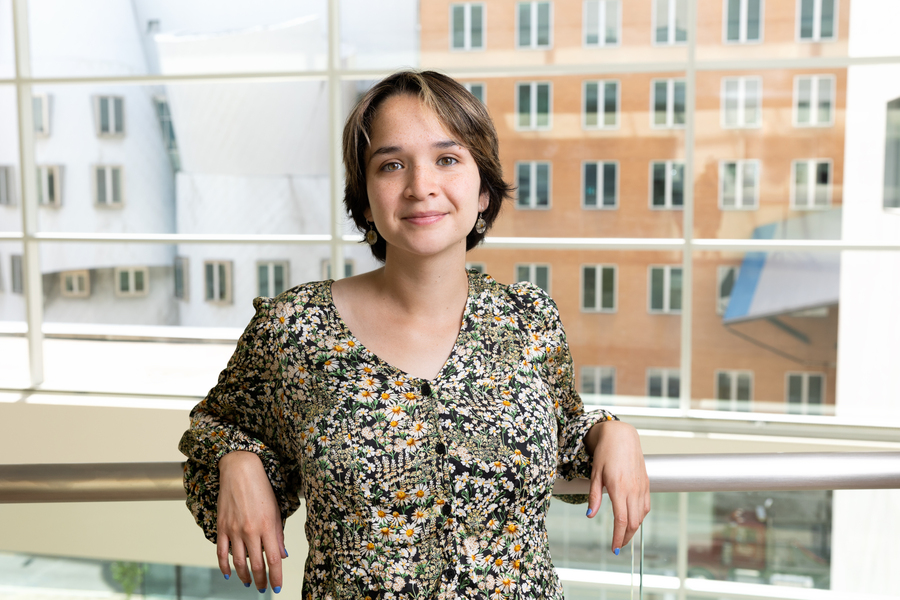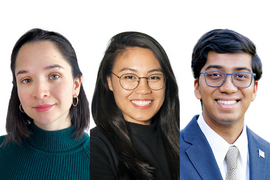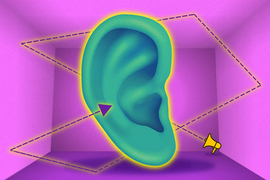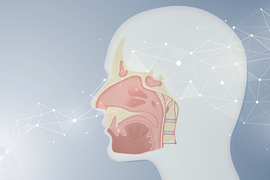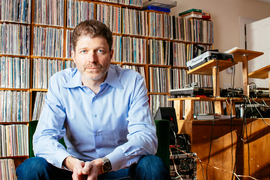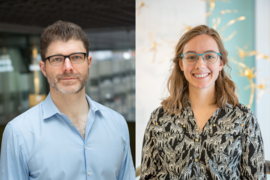Although Fernanda De La Torre still has several years left in her graduate studies, she’s already dreaming big when it comes to what the future has in store for her.
“I dream of opening up a school one day where I could bring this world of understanding of cognition and perception into places that would never have contact with this,” she says.
It’s that kind of ambitious thinking that’s gotten De La Torre, a doctoral student in MIT's Department of Brain and Cognitive Sciences, to this point. A recent recipient of the prestigious Paul and Daisy Soros Fellowship for New Americans, De La Torre has found at MIT a supportive, creative research environment that’s allowed her to delve into the cutting-edge science of artificial intelligence. But she’s still driven by an innate curiosity about human imagination and a desire to bring that knowledge to the communities in which she grew up.
An unconventional path to neuroscience
De La Torre’s first exposure to neuroscience wasn’t in the classroom, but in her daily life. As a child, she watched her younger sister struggle with epilepsy. At 12, she crossed into the United States from Mexico illegally to reunite with her mother, exposing her to a whole new language and culture. Once in the States, she had to grapple with her mother’s shifting personality in the midst of an abusive relationship. “All of these different things I was seeing around me drove me to want to better understand how psychology works,” De La Torre says, “to understand how the mind works, and how it is that we can all be in the same environment and feel very different things.”
But finding an outlet for that intellectual curiosity was challenging. As an undocumented immigrant, her access to financial aid was limited. Her high school was also underfunded and lacked elective options. Mentors along the way, though, encouraged the aspiring scientist, and through a program at her school, she was able to take community college courses to fulfill basic educational requirements.
It took an inspiring amount of dedication to her education, but De La Torre made it to Kansas State University for her undergraduate studies, where she majored in computer science and math. At Kansas State, she was able to get her first real taste of research. “I was just fascinated by the questions they were asking and this entire space I hadn’t encountered,” says De La Torre of her experience working in a visual cognition lab and discovering the field of computational neuroscience.
Although Kansas State didn’t have a dedicated neuroscience program, her research experience in cognition led her to a machine learning lab led by William Hsu, a computer science professor. There, De La Torre became enamored by the possibilities of using computation to model the human brain. Hsu’s support also convinced her that a scientific career was a possibility. “He always made me feel like I was capable of tackling big questions,” she says fondly.
With the confidence imparted in her at Kansas State, De La Torre came to MIT in 2019 as a post-baccalaureate student in the lab of Tomaso Poggio, the Eugene McDermott Professor of Brain and Cognitive Sciences and an investigator at the McGovern Institute for Brain Research. With Poggio, also the director of the Center for Brains, Minds and Machines, De La Torre began working on deep-learning theory, an area of machine learning focused on how artificial neural networks modeled on the brain can learn to recognize patterns and learn.
“It’s a very interesting question because we’re starting to use them everywhere,” says De La Torre of neural networks, listing off examples from self-driving cars to medicine. “But, at the same time, we don’t fully understand how these networks can go from knowing nothing and just being a bunch of numbers to outputting things that make sense.”
Her experience as a post-bac was De La Torre’s first real opportunity to apply the technical computer skills she developed as an undergraduate to neuroscience. It was also the first time she could fully focus on research. “That was the first time that I had access to health insurance and a stable salary. That was, in itself, sort of life-changing,” she says. “But on the research side, it was very intimidating at first. I was anxious, and I wasn’t sure that I belonged here.”
Fortunately, De La Torre says she was able to overcome those insecurities, both through a growing unabashed enthusiasm for the field and through the support of Poggio and her other colleagues in MIT’s Department of Brain and Cognitive Sciences. When the opportunity came to apply to the department’s PhD program, she jumped on it. “It was just knowing these kinds of mentors are here and that they cared about their students,” says De La Torre of her decision to stay on at MIT for graduate studies. “That was really meaningful.”
Expanding notions of reality and imagination
In her two years so far in the graduate program, De La Torre’s work has expanded the understanding of neural networks and their applications to the study of the human brain. Working with Guangyu Robert Yang, an associate investigator at the McGovern Institute and an assistant professor in the departments of Brain and Cognitive Sciences and Electrical Engineering and Computer Sciences, she’s engaged in what she describes as more philosophical questions about how one develops a sense of self as an independent being. She’s interested in how that self-consciousness develops and why it might be useful.
De La Torre’s primary advisor, though, is Professor Josh McDermott, who leads the Laboratory for Computational Audition. With McDermott, De La Torre is attempting to understand how the brain integrates vision and sound. While combining sensory inputs may seem like a basic process, there are many unanswered questions about how our brains combine multiple signals into a coherent impression, or percept, of the world. Many of the questions are raised by audiovisual illusions in which what we hear changes what we see. For example, if one sees a video of two discs passing each other, but the clip contains the sound of a collision, the brain will perceive that the discs are bouncing off, rather than passing through each other. Given an ambiguous image, that simple auditory cue is all it takes to create a different perception of reality.
“There’s something interesting happening where our brains are receiving two signals telling us different things and, yet, we have to combine them somehow to make sense of the world,” she says.
De La Torre is using behavioral experiments to probe how the human brain makes sense of multisensory cues to construct a particular perception. To do so, she’s created various scenes of objects interacting in 3D space over different sounds, asking research participants to describe characteristics of the scene. For example, in one experiment, she combines visuals of a block moving across a surface at different speeds with various scraping sounds, asking participants to estimate how rough the surface is. Eventually she hopes to take the experiment into virtual reality, where participants will physically push blocks in response to how rough they perceive the surface to be, rather than just reporting on what they experience.
Once she’s collected data, she’ll move into the modeling phase of the research, evaluating whether multisensory neural networks perceive illusions the way humans do. “What we want to do is model exactly what’s happening,” says De La Torre. “How is it that we’re receiving these two signals, integrating them and, at the same time, using all of our prior knowledge and inferences of physics to really make sense of the world?”
Although her two strands of research with Yang and McDermott may seem distinct, she sees clear connections between the two. Both projects are about grasping what artificial neural networks are capable of and what they tell us about the brain. At a more fundamental level, she says that how the brain perceives the world from different sensory cues might be part of what gives people a sense of self. Sensory perception is about constructing a cohesive, unitary sense of the world from multiple sources of sensory data. Similarly, she argues, “the sense of self is really a combination of actions, plans, goals, emotions, all of these different things that are components of their own, but somehow create a unitary being.”
It's a fitting sentiment for De La Torre, who has been working to make sense of and integrate different aspects of her own life. Working in the Computational Audition lab, for example, she’s started experimenting with combining electronic music with folk music from her native Mexico, connecting her “two worlds,” as she says. Having the space to undertake those kinds of intellectual explorations, and colleagues who encourage it, is one of De La Torre’s favorite parts of MIT.
“Beyond professors, there’s also a lot of students whose way of thinking just amazes me,” she says. “I see a lot of goodness and excitement for science and a little bit of — it’s not nerdiness, but a love for very niche things — and I just kind of love that.”
